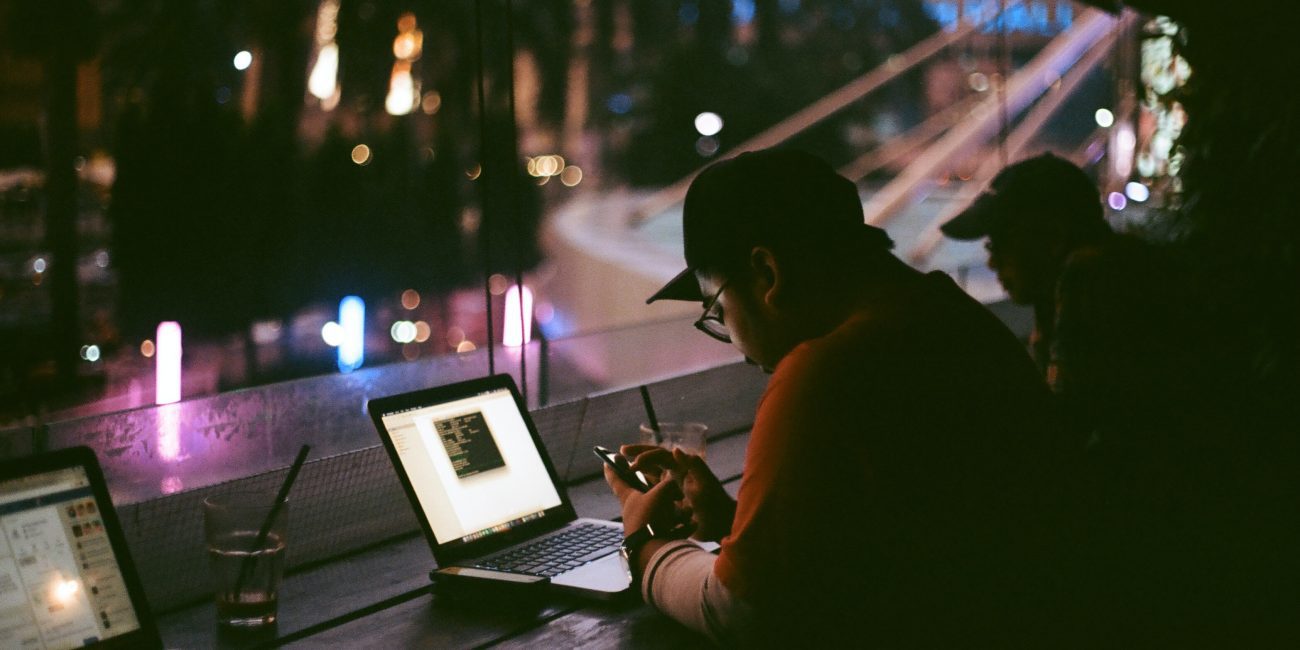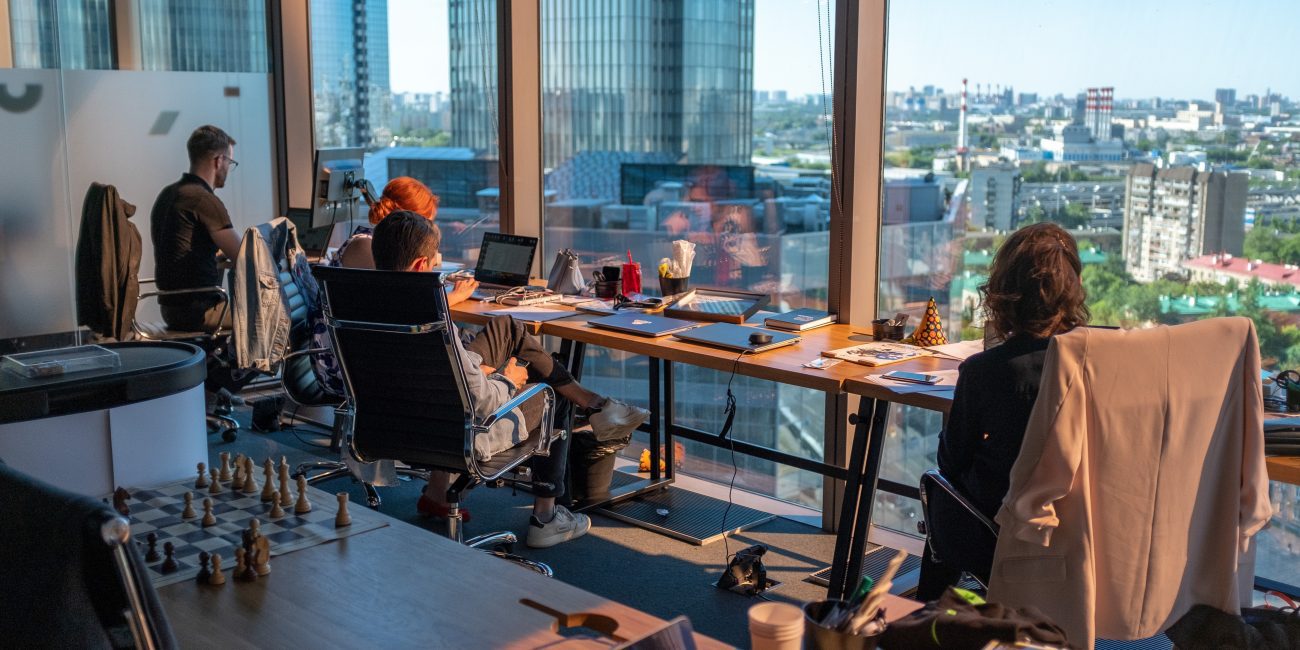Working Anytime, Anywhere
How safe, smart and sustainable ‘places’ can reignite our work communities
Grantley Morgan
Originally posted in May 2021
For me, the pandemic has been an event which exposed the fragility of workplace connection, casting doubt on the ability of work to deliver in all aspects of life for perhaps the first time. Spending the last 12 months working from my living room has been a chastening experience, demonstrating that the power of a good idea is seeded in the minds of many not the exuberant intellectual ideals of one. How, then, might we restore all that is energising and connective about the workplace? Fueled by the optimism surrounding the relaxation of the UK’s social distancing measures, this next blog in the New Work Odyssey series considers the changing role of the workplace as an anchor in our lives.
First up, some facts to frame the new workplace era we’re heading into:
- At least 80% of companies now anticipate remote working will become the norm (source: PWC)
- 73% of employees want flexible remote work options to stay (source: Microsoft)
- The number of weekly Teams chats per person (+45%), emails delivered (+40.6B) and virtual meeting time (+148%) all continue to rise steeply in the absence of physical workplace interactions (source: Microsoft)
- Yet our communication is narrower and arguably more transactional, with a recent Deloitte UK poll indicating that 68% of people report Less or Much less deep and meaningful relations with their colleagues when working remotely (source: LinkedIn)
- Perhaps no surprise then, 67% of employees want more in-person work or collaboration post-pandemic (source: Microsoft)
- And perhaps the most worrying consequence of our pandemic work experience, 75% of UK workers reported they have received No or Reduced learning opportunities since the onset of the pandemic (source: HowNow, published in Raconteur).
So, the overwhelming consensus points toward a Hybrid work model, but our ability to personalise the mix of space available to unique groups in our workforce will be central to its sustainability. In this blog, I explore the impact of 4 factors that could shape our workplace experience from this point forward. Then I outline how we can facilitate worker choice over when, where and how they work moving forward, through 7 new worker personas.
Making Hybrid work, work
4 Workplace Experience factors
Wherever we choose or are asked to work, our experience is shaped by four factors:
- Technology
- Space Allocation
- Social Connection
- Supervisory Norms.
Technology
Our response to the pandemic brought about a tectonic shift in how, when and where we work, all underpinned by technologies that can now connect our global teams independent of place. We’ll return later in the blog to consider why these technologies don’t yet meet all of our work needs, a fact which is influencing return-to-workplace planning for many. Nevertheless, when we needed to make the shift, we accelerated plans in some cases intended to span 5-10 years, and did so over weeks and months.
So why is innovation still necessary? Why should we consider that we aren’t moving ‘back’ to the workplace, but reintroducing the workplace into how we work? It starts by recognising that, now more than ever, work is something we do, not a place we go. In their recent research brief, Tim Oldman and Peggy Rothe revealed that an outstanding homeworking environment outperforms the average office environment in all but two activities within the Leesman Index – those being hosting visitors and informal social interactions. In other words, technology has equipped us so well for home-working that only an outstanding office workplace will be enough to tempt us back!
Hence, our technology investments now need to facilitate remote-first collaboration, enabling those in the office to communicate and collaborate equitably with those outside of the office – ensuring we don’t trade off the advances made from everyone contributing from an equally sized tile in Zoom or Teams. That could mean:
- Introducing Teams Rooms, blending the latest hardware and software to create a positive experience for physical and virtual meeting participants.
- Improving office acoustics, particularly in focus work environments where noise can be disruptive to those working in time around meetings.
- Facilitating smoother, touchless access to our workplaces and facilities within those. Changes to how we enter and navigate through workspaces, check in to dedicated desks/rooms, use shared facilities and more.
- Defending corporate systems against multiple points of attack split across corporate and home networks, a focus of most CIOs through the pandemic.
Equip workers to:
(1) Securely connect anywhere
(2) Collaborate effectively when teams are split between home and office
(3) Protect their health by using digital check-in protocols for health monitoring.
Space Allocation
Leesman research identifies 4 dimensions that can determine the suitability of space for a particular individual or team. Activity complexity and Individual/Collaboration ratio determine how effectively an individual’s Home working environment can support the work they do, and what Office modifications could make most difference to their experience. Personalising your work environments along these dimensions will likely incentivise people back to the workplace and improve post-pandemic retention.
Vodafone and Nestle set early benchmarks for the reimagined workplace – reducing desk space in favour of multiple zones for distinct types of work. Most professional service companies had already embarked on this journey prior to the pandemic, replacing largely two-dimensional spaces characterised by hot desks and private offices with increased collaboration spaces for teams of all sizes. HSBC recently signalled the same change in a shift towards hybrid work, with the CEO and Exec team leading by example.
‘Hoteling’ is an emerging concept, borrowing the learning from the hospitality sector to safely restore deep collaboration within small teams. Imagine a cross between an apartment and an office – Teams can book a space configured to their needs, with amenities accessible only to the group who have booked the space for enhanced safety. Keep reading to see how Microsoft applied this concept within the new Israel campus.
Action:
(4) Reimagine how space is allocated and for what purpose. Dynamism is the watch word here – using configurable layouts to increase occupancy levels around ritual meetings or community activities, and switching to spaces facilitating focus or collaborative work around these.
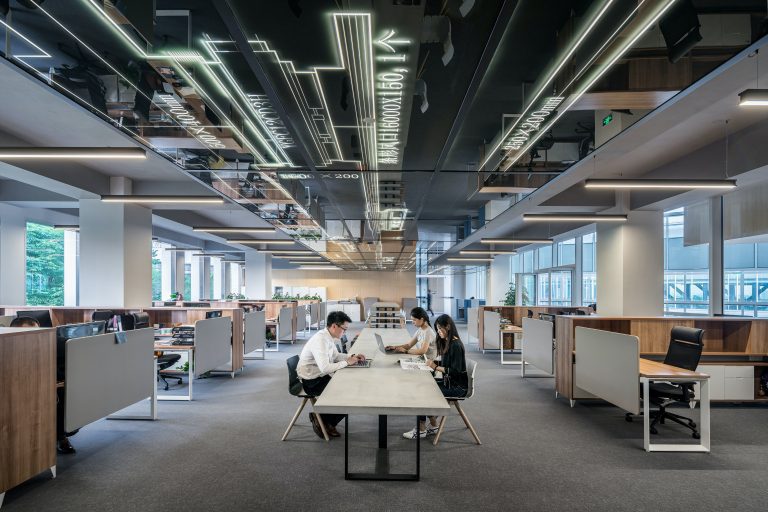
Social Connection
Despite the prevalence of technologies that connect us independently of the workplace, these technologies cannot yet replicate what is best about our workplaces – the communities we create, the ideas we generate and share, the learning we undertake, and the relationships we form. All of this leaves our people craving a return to the office for at least some of the time – most polls landing on 2-3 days in the office per week and 2-3 days spent in other spaces. So how can we build back better in terms of social connection?
Firstly, improving the experience of visiting the office or workplace should be high on the agenda. Companies at the vanguard are moving to create spaces which show off their brand, enable people to come together creatively for work and for fun, with wellbeing placed at the core of the experience (everything from catering to light/air/noise controls). Among these, Microsoft’s new Israel campus stands out as an experiential workplace. Modelled on the way cities intersect purposeful places, the campus is divided into four hubs: Downtown, the industrial zone; Midtown, the eclectic, playful mainstream area; The Garden, the green outdoor level; and Uptown, which is made to feel like a boutique hotel. “Boulevards” tie together the different zones. Zones host team-based ‘neighbourhoods’, bringing the ‘hoteling’ concept to life; while campus facilities extend to social and cultural life, offering employees a true hub for work and life.
Having restored the office as a hub for community and connectivity, next consider the role that co-working spaces could play in value generation across your ecosystems. This could combine space management with the intentional use of co-working spaces not as simple overflow but to co-locate your teams with partners for deep collaboration. An option perhaps particularly well-suited to business units working to a project or product-based model where space needs fluctuate depending on the stage of work being complete. Whilst not a new phenomenon, co-working spaces will continue to change the look-and-feel of our cities and suburbs. Indeed, as the need for corporate HQ space reduces by up to 40%, Stefan Behnisch is an architect tipping many companies to consider making HQs mixed-purpose buildings, adding residential areas to reduced office/retail allocations. Might we see a new employee benefit category emerge, providing discounted corporate accommodation schemes to entice talent back into cities?
Finally, consider how technology can better connect your people across multiple workspaces, recovering serendipity which isn’t bound to defined teams or work-groups. Platforms like Teamflow and Altspace are innovating virtual communication methods to imitate office-based interactions. With all the talk about repurposing space in this blog, we should still focus on how to best connect people working in globally-distributed locations – whether they are working from core, co-working or home spaces.
Actions:
(5) Consider the purpose of your buildings: don’t assume workplace needs and expectations are static, do personalise for the unique needs of different workforce segments.
(6) Design for team interactions first, rather than individual work which is now better suited to home environments.
(7) Experiment with digital solutions that can bring teams in disparate locations together, even when back in the office.
Supervisory Norms
At the onset of the pandemic and throughout, concerns regarding remote monitoring of workers have been synonymous with the rise of remote work. It is reported that 45% of companies have ‘not yet considered’ workplace monitoring technology, compared with only 27% who do not plan to implement. 22% had already implemented or or plan to do so, rising to 27% of large companies (source: Skillcast, published in Raconteur). This comes despite evidence from the Leesman Index that 82% of workers consider they are able to work productively from home, compared with 63% from the office (source: Raconteur). Clearly then, a mismatch in expectations prevails.
Microsoft recently reported a gap of 23% between leaders thriving at work and the average of those without decision making authority. Leaders also reported favourable gaps in building work relationships and use of vacation days.
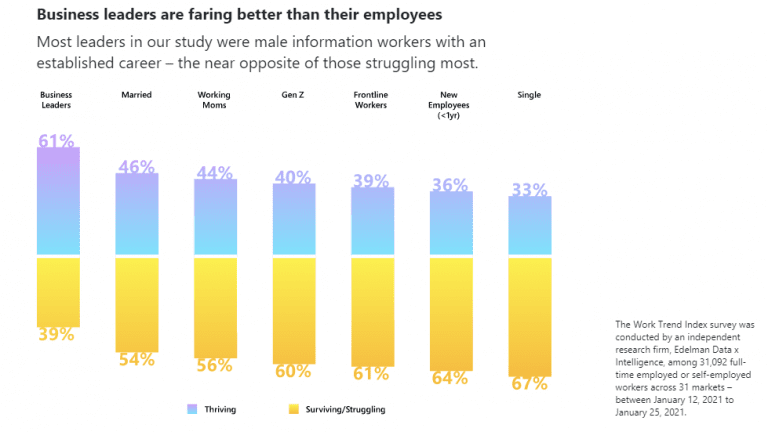
This indicates that remote/hybrid leadership models need to account for the impact of multiple factors beyond the workplace in assessing not just the productivity of employees, but the suitability of the future workplace mix available to them. Trust appears to be the underpinning factor here – those with decision making authority being trusted to use it, those without potentially being put under the microscope.
Many companies making successful transitions to remote/hybrid work models have focused training on both managers and workers. IKEA, for example, delivered over 2M hours of training in 2020, much of it focused on remote/hybrid work training for managers and workers. Evidence grows that under-prepared managers resort to task-based management principles when they can’t see their teams. Consider using the opportunity to change the focus of productivity metrics in your organisation – place wellbeing, return on ideas and collaboration at the core of management practice.
Action:
(8) Provide more insight on team wellbeing and working patterns, to both managers and individuals themselves. In doing so, take the opportunity to design new measurement frameworks which incorporate future-ready metrics.
Never have the combinatorial effects of technology, space, place, and trust been so important to the future of work. Next, let’s look at how these impact differently on 7 groups within the workforce.
From Roamers to Homers
7 emergent workplace personas
In thinking about the factors of workplace experience interplay, I’ve defined 7 personas that can help us understand the changing distribution of work across space and time.
Each of our 7 workplace personas come with differing needs across Technology, Space Allocation, Social Connection and Supervisory Norms. Those dimensions will be accentuated further by Industry, Job Family and Individual Circumstances. The watchword of course is flexibility – most organisations are landing on the Hybrid model, which risks masking significant variation in worker needs. Tailoring the lived experience for each persona accordingly to their unique needs is vital to harnessing the lessons of the pandemic. Avanade research shows organisations capable of responding to those lessons will realise 112% higher ROE than those who don’t (source: Avanade).
If the emerging consensus holds, the pre and post-pandemic distribution of time in place for each of our personas could look something like this illustrative example:
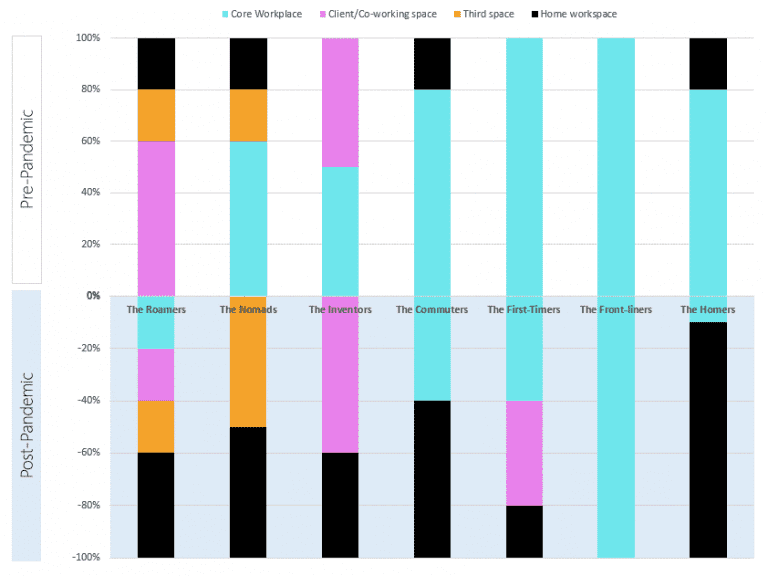
Home workspace (black) becomes the default work setting, with 50% of days across all personas spent at home. The Core Workplace (blue/green) is replaced, reducing from 67% of all days pre-pandemic to a mere 30% in the emerging model. Use of Co-working (pink) or Third spaces (orange) is bound per role in this model, with the overall share increasing slightly to 20% of time across all groups. What might your future mix look like?
Lets unpack each persona in turn, and consider the reasons for their changing workplace mix.
The Roamers
Commonly your field-based teams and leadership roles. Previously may have spent 80-100% of the week travelling between hub and satellite company spaces, client/customer locations and third spaces. Balancing health, wellbeing and family commitments is likely to be of much greater importance to Roamers post-pandemic. Adjust your expectations re their time on the road, and consider it essential to help them manage their movements between workplaces with care and security.
Winning workplace experience elements for Roamers include:
- Multi-device, multi-site digital identity management and security solutions, such as Proxy and duo.
- Club-based access to flexible workspace, such as the deal announced between IWG and Standard Chartered. This could even become a family-friendly benefit, with Marriott Bonvoy among those introducing workcation packages paired to our new levels of work-life integration.
The Nomads
Likely to pair contractual and workplace flexibility, Nomads will continue to grow in number and thrive in the new-found distribution of work and teams. They seek new experiences, demand the ability to balance work and life goals, and gain energy from meeting new people. Harnessing nomads as ecosystem builders will likely mean equipping them for hub and third space working, where they can gather new ideas and challenge established ways of thinking. Consider the issues of network security and speed at which nomads can connect with customers and their data. Used strategically, reaching new markets or growing new business models will be easier than ever before.
Winning workplace experience elements for Nomads include:
- Flexible work-from-anywhere talent models akin to Spotify‘s recent announcement, which allows workers to first choose a remote, hybrid or office based model, then select which country and region they wish to base (with support available for relocation and paid co-working memberships) – a bold level of global flexibility inspired by listening to their employees.
- Effective processes to manage tax and residency implications of such models, potentially extending to adoption of remote-first HR platforms such as Oyster HR.

The Inventors
Likely to be missing the office as a creative, social hub. Consider rebalancing the amount of real estate you designate as “studio” space to capture serendipitous innovation, learning and teaming in ways that technology currently can’t replicate for the vast majority of us. Inventors typically enjoyed the most experiential spaces pre-pandemic – many of which shared traits with leading hospitality or retail spaces. Consider extending that experience to Roamers, Commuters and Nomads with more regularity.
Winning workplace experience elements for Inventors include:
- Team ‘hoteling’ approach to workspace allocation, allowing for small groups to safely collaborate in-person.
- Community Relationship Managers to curate connections across distributed workplaces, such as those introduced at Wise.
The First-timers
Overwhelmingly, the loss of the workplace may have most impacted those of us who have onboarded into new organisations during the pandemic or those who only recently entered the workplace altogether. Recent research indicates up to 75% of UK workers received no training or reduced training during the pandemic. Catching up those who lost valuable time with colleagues at the beginning of their journey will be vital to network creation. Beyond that, can you take steps to reduce the location-dependency of onboarding and learning experiences in the future? If not, consider designing specific spaces for these purposes. Well before the pandemic, retailers such as Greggs experimented with regional recruitment centres annexed to larger stores. Whilst not suitable for all businesses, I fully expect the benefits of such a strategy to increase significantly post-pandemic.
Winning workplace experience elements for First-timers include:
- Prioritised or fast-track workplace access, to meet with and learn from colleagues
- Club-based membership to co-working spaces, improving the space and social connections available to First-timers when they aren’t in the office.
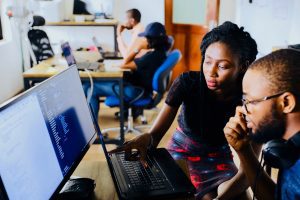
The Commuters
Previously committed to a single place of work for 4 or 5 days a week, expectations have shifted irreversibly for the majority of the workforce. People now expect more flexibility, and managers expect to provide it. Reducing to 2 or 3 days per week in the office, it will be important to manage the flow of people between workplaces using cross-team insights, ensuring the right collaborators are in the office on the right days. Consider also adding/repurposing real estate in satellite locations closer to the communities in which your people live – great for your people, potentially great for customers and strategically important for minimising the disruption of future Black Swan events. Then reconsider how hub workspace is configured for collaboration, learning, and social connection, with a reduced emphasis on focus work.
Winning workplace experience elements for Commuters include:
- Touchless workplace technologies, assisting Commuters in accessing desks and other workspaces safely.
- Zonal approach to workspace design with dedicated spaces for each type of work undertaken, such as the model announced by Vodafone.
The Front-liners
Frontline teams have been pandemic heroes in settings such as manufacturing, supply chain, essential services and care. Technology to improve their workplace experience will help to allay health fears as we re-adjust to mass transit (particularly in larger cities where people use public transit rather than driving to work). Also consider ways you can reduce the distance between Frontline workers and Inventors/Commuters. With mixed reality entering the mainstream, it will be possible to bring specialist knowledge into workflows without a reliance on co-location – countering longer-term talent risks well beyond short-term return-to-work decisions.
Winning workplace experience elements for Front-liners include:
- Bespoke apps such as Beekeeper or Teams for Frontline Workers, enabling frontline workers to give/receive information without needing direct access to major corporate systems.
- In the longer-term, consider how hardware-platform combinations such as Microsoft Mesh could improve collaboration between frontline and knowledge workers, as they emerge.

The Homers
Masters of routine, those who prefer a fixed work location benefit from control over their environment, much like metronomic sports stars for whom repetition and rehearsal lead to the best results. Going forward, that might be home or office – consider investing to meet worker needs where they are, e.g. allocating a budget for home office improvement or involving workers in workplace/workspace reconfiguration projects. Minimising disruption is likely to be key to workers in this category, for whom activity variation is minimal compared with Inventors or Roamers. Carefully identify groups where a single workplace strategy makes most sense, without assuming this can apply to all – the continuing debate around comments made by Goldman Sachs CEO David Solomons indicate that pre-pandemic workplace assumptions have likely ran their course.
Winning workplace experience elements for Homers include:
- Workplace benefits package for enhanced home working equipment, such as those offered by Google and Accenture.
- Insights to help workers manage wellbeing, collaboration patterns and work-life integration, such as those now incorporated into Microsoft Viva.
The journey to resurgence will occur at different times for each person (due to the pace of vaccinations, personal circumstances and an individual’s own comfort with a return to ‘normal’). We should continue to listen, re-plan, fail fast where needed, and show patience in pursuit of the lost effects of workplace collaboration. I hope the 7 personas featured here will help to characterise what works for your people.
Summary
Personalise your workplace configuration to the needs of 7 personas, and give employees the choice on which persona(s) best fit their needs
Work is now detached from place and time and, while our relationship with the workplace will continue to evolve, we can be assured that our teams will be more distributed than ever before.
Our mass remote work experiment through the pandemic has delivered many successes, none moreso than normalising remote work and evolving our understanding of what it means to be productive. However, as the 4 factors of workplace experience and 7 workplace personas show, the interrelationships between them are far more complex – bound to the nature of the work we do, our lives outside of work, our homes and workplaces, and the technologies that enable us to work.
As we move to re-open our workplaces, particularly offices, reconsider their purpose as Vodafone, Nestle, Standard Chartered and more have. Offices re-purposed as hubs for connection, collaboration, celebration and community building will stand the test of time – but the configuration of those spaces, who flows through them and when, may have all been permanently reset.
Many of you reading this will already be listening to your employee needs – keep doing that as we move deeper into recovery, meet the personalised needs of your workers as they change with our evolving understanding of work in the future. Until the next time, thanks for reading.
With optimism,
GM
May 2021


